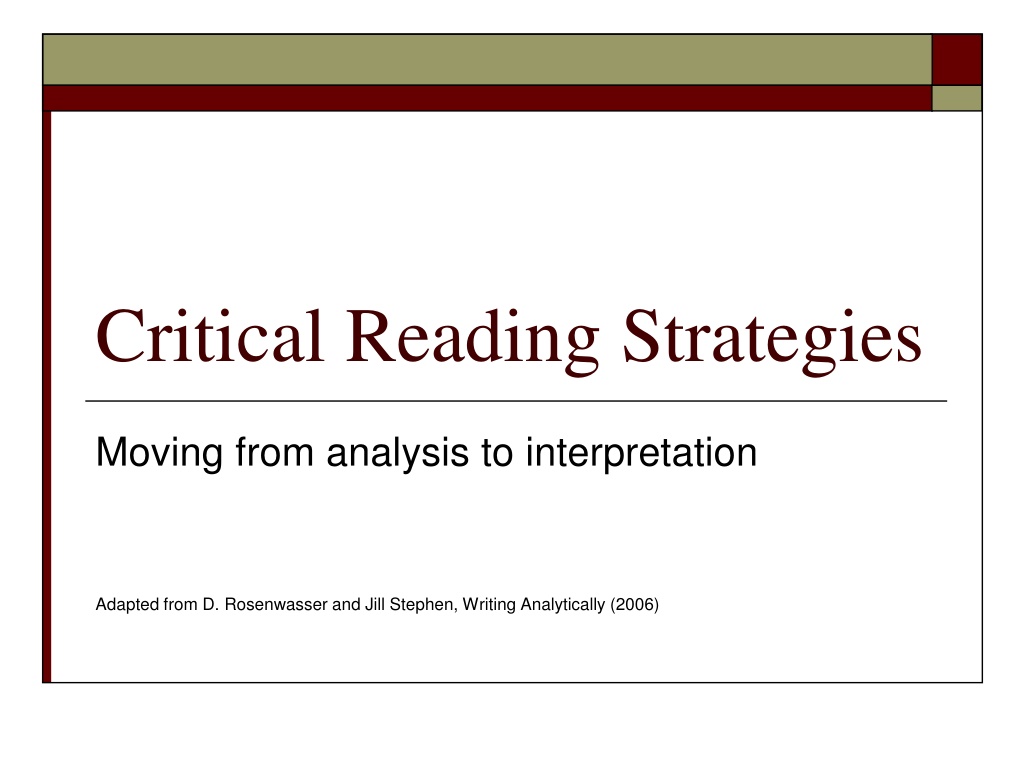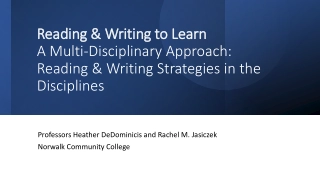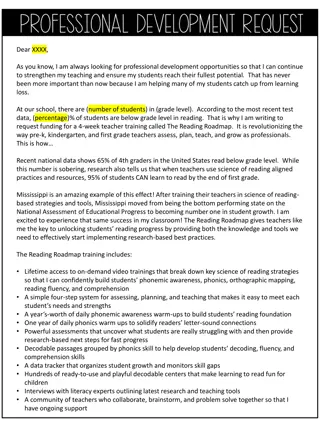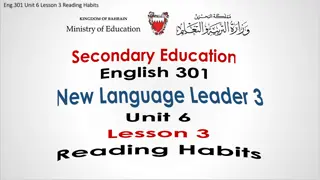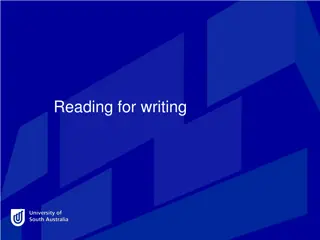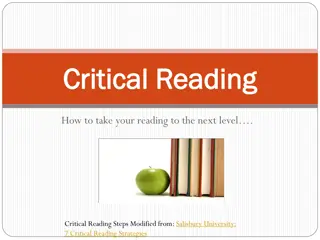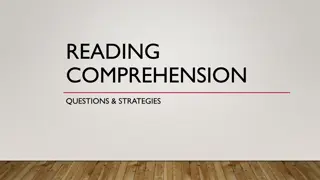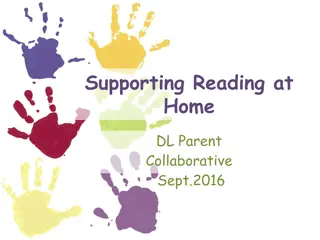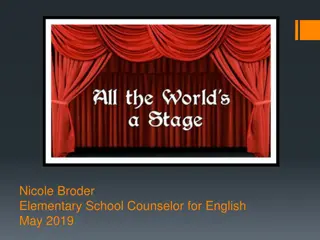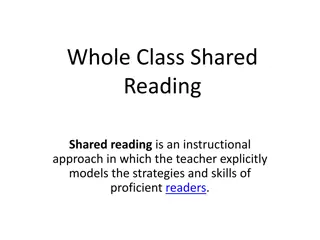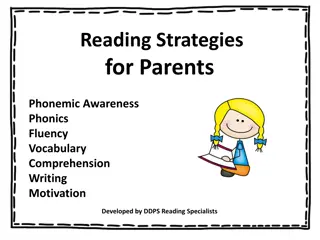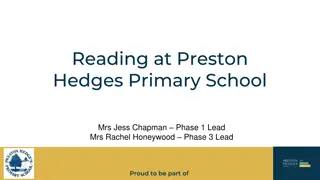Enhancing Critical Reading Skills: Strategies and Benefits
Explore essential strategies like noticing, focusing, and analyzing details to deepen understanding while reading. Learn how to identify patterns, repetitions, and binaries to move from analysis to interpretation effectively. Discover the benefits of in-depth engagement with texts and how to draw meaningful insights through thoughtful examination.
Download Presentation

Please find below an Image/Link to download the presentation.
The content on the website is provided AS IS for your information and personal use only. It may not be sold, licensed, or shared on other websites without obtaining consent from the author.If you encounter any issues during the download, it is possible that the publisher has removed the file from their server.
You are allowed to download the files provided on this website for personal or commercial use, subject to the condition that they are used lawfully. All files are the property of their respective owners.
The content on the website is provided AS IS for your information and personal use only. It may not be sold, licensed, or shared on other websites without obtaining consent from the author.
E N D
Presentation Transcript
Critical Reading Strategies Moving from analysis to interpretation Adapted from D. Rosenwasser and Jill Stephen, Writing Analytically (2006)
Benefits Forces you to consider the data more carefully before responding Prevents you from generalizing or evaluating too soon, before you truly understand the data Will give you better ideas to write about Will inactivate your like/dislike agree/ disagree switch
Rules: 1. Annotate Slow down; resist judgment Ask yourself these questions What do I notice? What do I find most interesting? What do I find most strange? What do I find most revealing?
Rules: 2. List all of the details you notice 3. Rank the details: Which details or specific features of the subject are most interesting (strange, revealing, significant)? 4. Explain why the top three details are interesting (strange, revealing, significant)
Benefits Attains the big picture Prevents overgeneralizing Can see what is the most important idea(s) Triggers ideas Digs into language to unearth the thinking behind a text s organizing similarities and contrasts
Rules: 1. List and number exact repetitions of substantive (meaning carrying) words (vs. a, the, is etc.) 2. List repetitions of synonyms, e.g., polite, courteous, decorous (strands) 3. List words that seem to be in opposition, e.g., kindly/unfriendly (binaries)
Rules: 4. Look for exceptions (anomalies) to the patterns you have discerned; they usually can be part of a strand or opposition. 5. Choose one repetition, strand, or binary as most important, interesting, etc. and explain why.
Disclaimer Sometimes a struggle among points of view demonstrates that a number of binaries appear to be the primary organizing principle No one right answer exists
